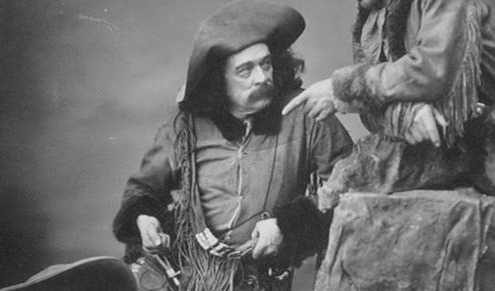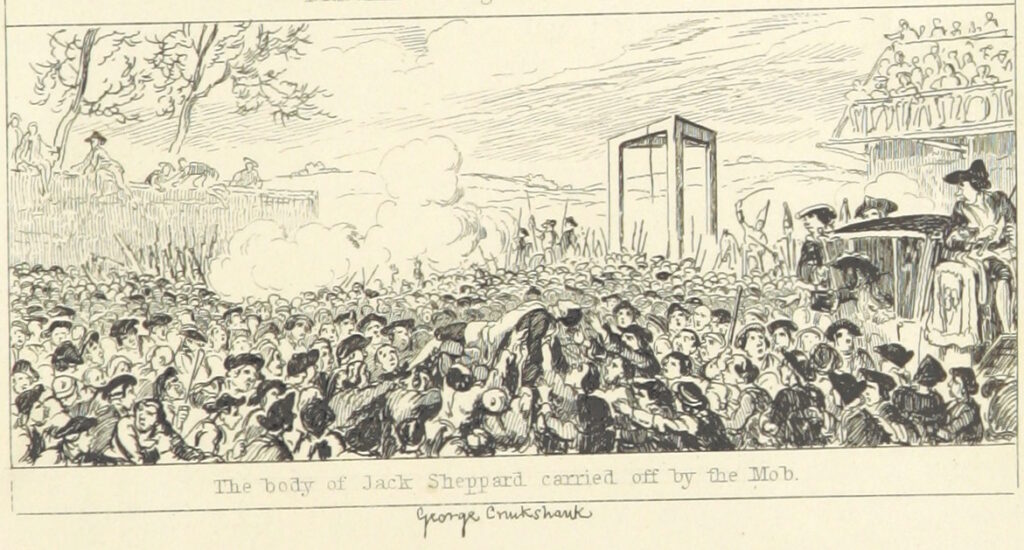Mobs are a force of nature. Individual thought is dissolved within the broad and shallow consciousness of the mob. They can be fun obstacles in RPGs, but short of hiding from them, how can you defeat one? The 1846 attempted lynching of Ned Buntline offers a case where a mob in the act of murdering someone was convinced to disperse.

Ned Buntline (real name Edward Judson) was a writer of Wild West stories, a sailor, a journalist, a Know-Nothing (the nativist political movement), and a scoundrel. In 1846, he arrived in Nashville, intending to start a newspaper. In the interim, he started seeing Mary Porterfield. This was something of a problem, as she was married to a local pillar of the community, Robert Porterfield. The Porterfields’ marriage was in a rough patch, and Mary, it would seem, found solace in Ned’s disreputable arms.
When Robert found out, he confronted Ned with a gun. Ned denied everything. Robert didn’t believe him. He forbade Mary from contacting Ned. The next day, a friend of Robert’s saw Mary and Ned together in the city graveyard. Robert and his brother John went and found Ned and started shooting. Ned begged for them to be reasonable, but ultimately drew a pistol and shot back, hitting Robert right over the eye. John carried Robert home.
Ned was taken to the courthouse for arraignment. A crowd had gathered to hear the judge remand Ned to jail, and soon a cry went up. “Make way for John Porterfield! Let him kill Judson!” And sure enough, as the crowd parted, there was John Porterfield, charging Ned with a gun in his hand. Ned ran out the back door, pursued by a mob. They trapped him in a second-floor hotel room, where he leapt from the balcony, landed badly, and was taken away, unconscious, by the police.
But the mob wasn’t done. More and more people gathered around the jail as the evening went on. Around 10pm, they burst in. The jailer turned over the keys under threat of being killed himself, and the mob hauled an already-injured Ned into the town square. Somebody tied a rope around Ned’s neck and threw the other end over an awning. The mob hauled him up and laughed as Ned kicked and slowly strangled.
Then the rope snapped. It was later found that someone, maybe one of Ned’s friends, had cut it halfway through before the attempted lynching. A voice from the darkness cried out “Take him back to jail! Let the law have its course!” And astonishingly, the mob did just that. Other folks took up the cry. Men – who only moments before had been cheering Ned’s death – hauled him to his feet and dragged him back to the custody of the very same jailer they’d just threatened to kill. The crowd dispersed, and folks went home. Ultimately, Ned never went to trial (probably because he only shot Robert Porterfield in self defense), and skipped town just as soon as he was well enough to do so. Robert died around the time Ned was being returned to his cell. Mary moved to New York City with her children, remarried, and apparently did well for herself – a nice ending to an otherwise-ugly story.

If this incident is any indication, to disperse a mob you need to interrupt its actions, frustrate its attempts to do violence, and then (once the mob is unsure what to do next), appeal to the better natures of its members. From an RPG perspective, you can look at this as a puzzle (‘how do I stop the mob from doing what it wants?’) followed by a roleplaying exercise (‘let’s make a great speech about brotherhood!’). Of course, your players may come up with other solutions. But if the problem has a solution, that means it’s fair game for use at the table.
A final note: you have to be careful when using mobs at the table. I once ran a two-year campaign set almost entirely in a single remote village. The first time I used a mob, it was great fun. The PCs accidentally burned a rival’s house down while they were snooping around, and the villagers blamed a census-taker: someone from out of town in a place that doesn’t get many out-of-towners. The PCs rescued him from a lynching and smuggled him out of town to save his life, and the players felt awful about the harm they’d almost caused this innocent man. It was a great session. The second time the villagers formed an angry mob, the players started wondering what was wrong with this town that its inhabitants were so quick to form mobs. I almost lost player buy-in, because who wants to put their character’s life on the line to save a town like this one? Mobs can be a lot of fun, but if you overuse them, you risk making the people who formed the mob seem unusually unsympathetic.






